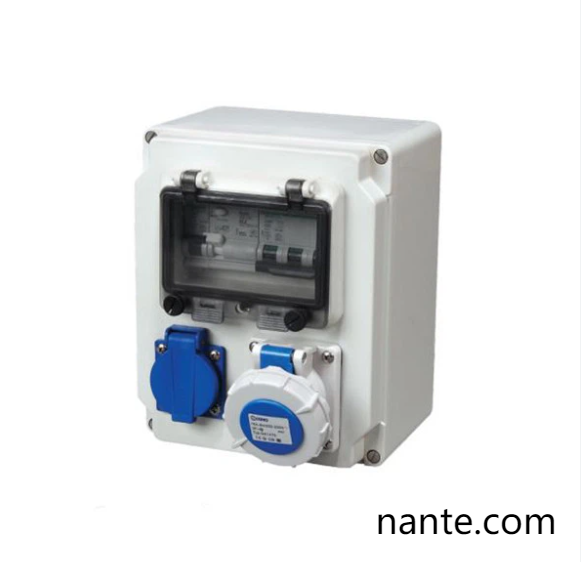In challenging environments where machinery hums and operations demand continuous energy delivery, deploying an industrial socket box can transform any workspace. From heavy steel mills to high hygiene food processing areas, this protective unit safeguards connections, controls distribution points, and helps maintain uninterrupted workflows. As factories adopt automated lines and adapt to stricter safety standards, having a rugged distribution enclosure becomes an essential element rather than an afterthought.
Metal fabrication plants rely on robust housings to shield outlets from sparks, debris, and extreme temperatures. A corrosion resistant junction module resists wear arising from cutting, welding, and grinding tasks. In these situations, reinforced polymer or treated sheet steel assemblies protect internal terminals from foreign matter while enabling technicians to swap plugs swiftly. Intelligent circuit breakers within the enclosure guard against overloads caused by large motors that start under heavy load, preventing damage and avoiding unplanned downtime.
Meanwhile in modernization projects, beverage bottling and meat packing facilities must observe cleanroom protocols. A food grade rated housing offers smooth surfaces that resist bacterial growth, while sealed gaskets keep moisture out. Service personnel appreciate quick release panels for fast inspection without dismantling walls. Plug positions that align with conveyor lines or filling stations minimize tripping hazards. When sanitary audits arrive, these units demonstrate compliance by combining hygiene friendly design with dependable functionality.
Automotive assembly lines integrate numerous conveyor systems, robotic welders, and testing rigs that draw varied currents. Here, a multi output cabinet consolidates feed points in one location. By labelling each socket port clearly, maintenance crews can isolate specific sub lines and perform repairs without halting the entire line. This modular approach simplifies upgrades or reconfiguration when models change or production shifts. Lockable covers prevent accidental disconnection while still offering access during scheduled maintenance windows.
In wood processing shops, sawmill operators face airborne sawdust and high humidity from treated lumber. A sealed enclosure prevents clogging of contacts and reduces fire risk. Galvanized finishes or UV stabilized plastics ensure that surface degradation remains low, even under direct sunlight near drying kilns. These robust units often feature weatherproof boot seals on cable entries, maintaining safe operation when hoses spray to suppress dust or cool equipment.
Chemical plants and refill stations demand explosion proof solutions. A certified containment box controls ignition sources by enclosing plugs inside gas tight shells. Spring loaded shutters close instantly when not in use, preventing vapor ingress. Technicians value the peace of mind that arises from knowing lighting towers and pump controls will not spark in volatile atmospheres. Coupling these enclosures with ground fault protection adds another layer of security in spill cleanup or loading docks.
In textile mills, where dye machines and large dryers cycle constantly, the ability to monitor current draw remotely is valuable. Smart variants equipped with digital displays allow supervisors to track load patterns and schedule service before faults occur. If a bearing seizes or a heater element degrades, rising amperage becomes visible on the panel, triggering alerts and avoiding catastrophic failure. This proactive stance reduces labor costs and limits scrap rates by catching anomalies early.
Packaging lines benefit from compact enclosures mounted directly on machinery frames. For ribbon sealers and card inserters, a local socket distribution hub means shorter lead runs and fewer cable ties. Enhanced strain relief clamps support heavy gauge cables that carry higher currents for printing modules. Crane rails and stacker cranes also utilize these panels to feed battery chargers and control consoles, keeping mobile units energized without tethering operators to fixed walls.
Even research labs and pilot plants make use of flexible distribution points. When testing new reactors or pilot scale fermenters, temporary setups require rapid installation of outlets near work benches or containment areas. A portable cabinet on wheels allows scientists to relocate as experiments shift objectives. Integrated surge protection and conditioning filters ensure sensitive instruments remain shielded from spikes generated by nearby high power equipment.
From construction sites to educational workshops, the adoption of a quality distribution enclosure enhances efficiency and safety. As regulations evolve and demands for productivity rise, integrating a reliable junction unit supports diverse applications across industries. By selecting a solution that matches environmental challenges and allows straightforward servicing, facility managers can focus on innovation rather than upkeep.
To explore a range of industrial distribution housings designed for demanding conditions and versatile deployment, visit https://www.nante.com/product/. You will discover options that accommodate varying currents, support cleanroom requirements, and include advanced monitoring features. Equip your workplace with components that balance durability, hygiene, and intelligent control to meet today's production challenges.



